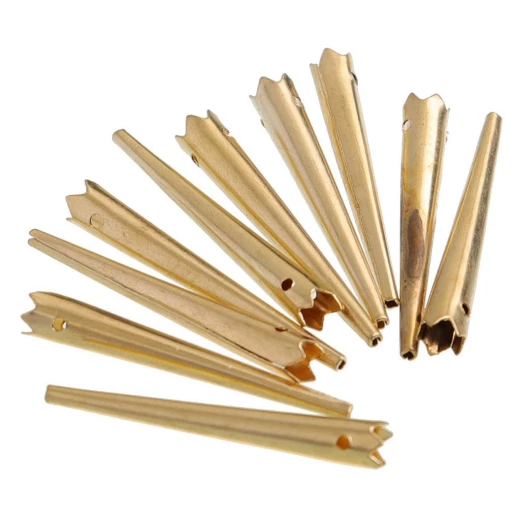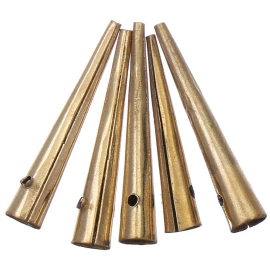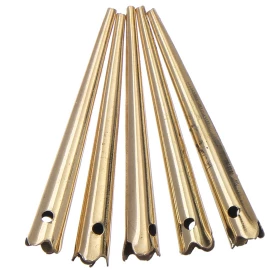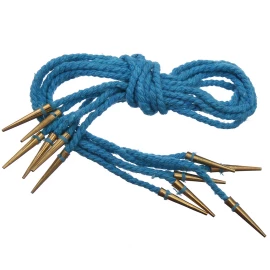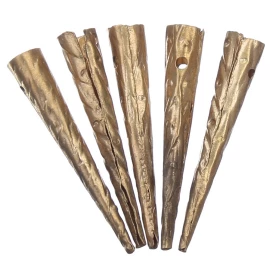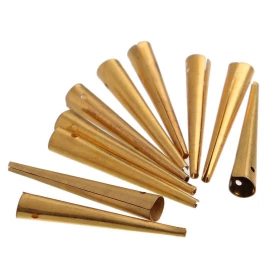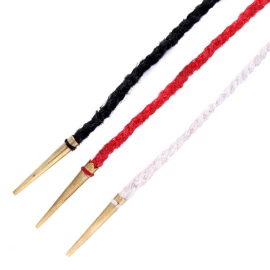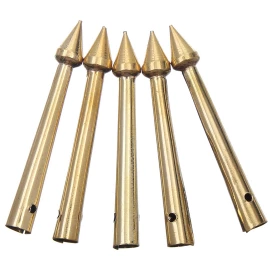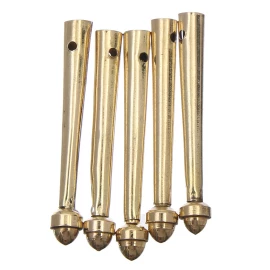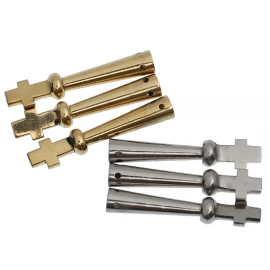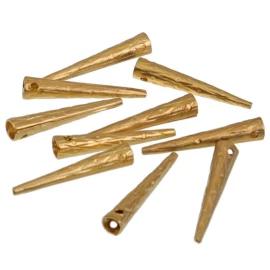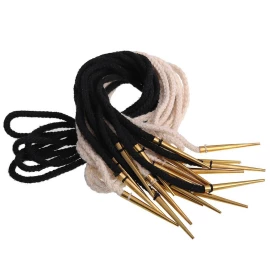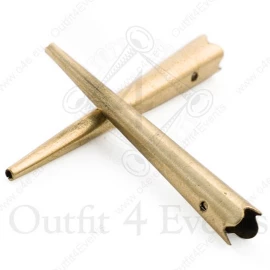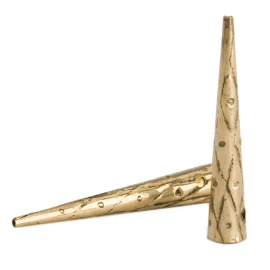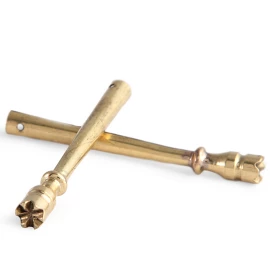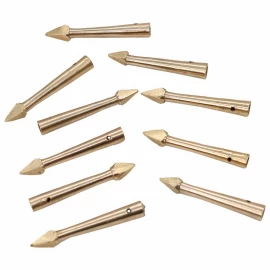10pcs Brass Aiglets with serrated edge
Intended as a end-cap sheath for the drawstrings to Medieval and Renaissance clothing, these brass Aiglets come in a pack of 10. More information...
€8,30
€8,30 excl. VAT
In stock
89
pcs
 , dispatch on: 29-Jul-2024
, dispatch on: 29-Jul-2024
Item physically stored in our Warehouse in Kadan
SKU: LB_8702-10pcs
10pcs Brass Aiglets with serrated edge
A high-quality product made by Lord Of Battles®
Length: approx. 35mm
The diameter of the wide end: approx 5mm
The diameter of the thin end: approx 2mm
Write to our specialist


